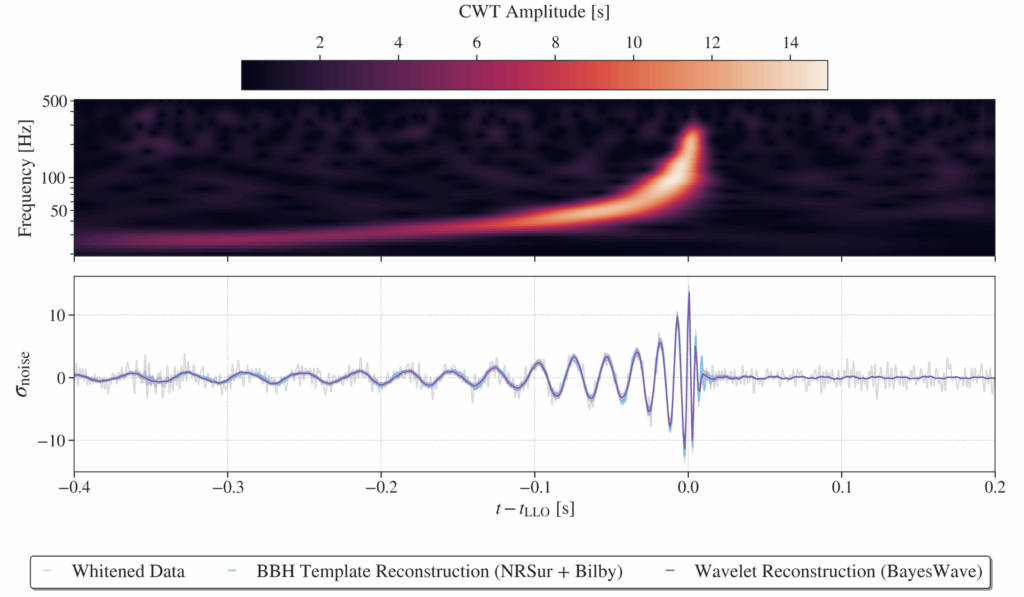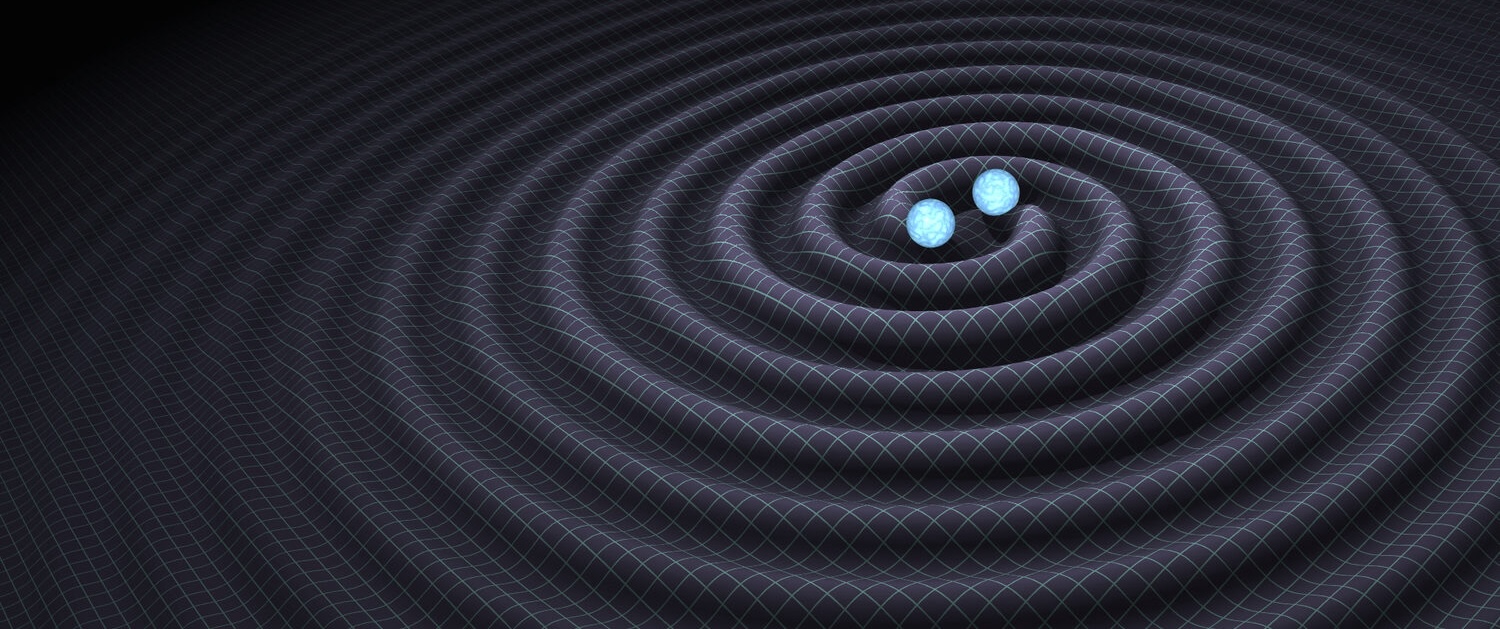On September 9, 2025, the LIGO-Virgo-KAGRA (LVK) collaboration released a paper on GW230814, a gravitational-wave signal produced by the merger of two black holes with masses 34 and 28 solar masses. The signal was detected by the LIGO Livingston observatory with a signal-to-noise ratio (SNR) of 42, making it among the largest SNR events (and the largest released in the GWTC-4.0 catalog which covers the first part of the O4 observing run). This high SNR enabled the first confident detection of the l =|m|=4 mode in the inspiral as well as detailed consistency tests of general relativity predictions.

The gravitational-wave signal GW230814. The top panel shows the time-frequency representation of the signal where brighter regions indicate larger amplitude. CWT (Continuous Wavelet Transform) refers to the method used to construct this time-frequency representation. The bottom panel shows the signal represented as a time series. The blue and purple lines show two different methods of reconstruction for the signal waveform. It is clear that the signal is a compact binary coalescence and the data are in good agreement with the reconstructions until the ringdown.
Publications & Documentation
- Publication: GW230814: investigation of a loud gravitational-wave signal observed with a single detector [PDF download from LIGO DCC] [arXiv version]
- Science summary [PDF flyer]
- See the main ligo.org detection page for further resources.

